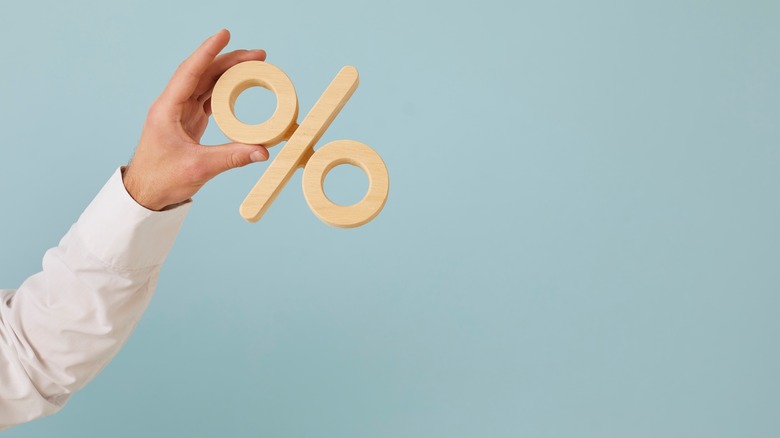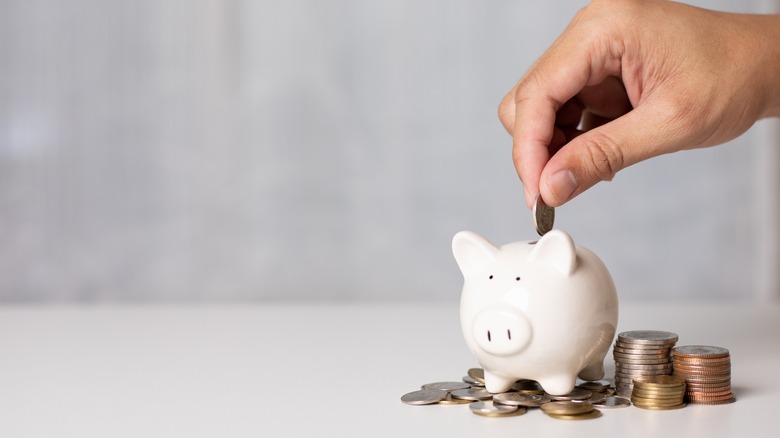How Mortgage Buydowns Are Affecting The Housing Market
The mortgage buydown scheme is not a new feature of the real estate market, but it's one that's profoundly affecting the marketplace entering 2023. Axios notes that mortgage buydowns offer an incentive to home buyers and can sweeten the pot to help a seller move a property that hasn't seen much interest or any offers.
Essentially, a seller offers to place funds in escrow that will be paid directly to the lender for a period of time. This funding reduces the interest rate that buyers must contend with for up to three years upon the closing of the transaction. Forbes Advisor reports that the average rate for a 30-year fixed mortgage at the beginning of 2023 is 6.61%, surging far beyond the 3.22% that buyers could expect at the same point in 2022. Mortgage buydowns bring this incredibly heightened cost down to size in a meaningful way and may just entice potential buyers to rejoin the marketplace instead of waiting it out in search of calmer seas.
Axios reports that mortgage buydowns were popular both in the 1970s, when interest rates went on an extended upward run and again in the leadup to the financial crisis that gripped the 2000s. This second period of increased use is a sort of outlier since a wide swath of mortgage products were pushed with relative impunity. However, they can potentially sway the market in a meaningful way today.
Mortgage buydowns reduce early mortgage repayment figures
It's important to note that a mortgage buydown does not change the permanent terms of the loan. Instead, it reduces the rate in the early days of ownership to make the purchase more affordable in the short term. After the buydown period expires, the borrower's rate reverts to the agreed-upon figure. However, after two or three years, a buyer might be banking on the economy strengthening and a severe reduction in typical interest rates. This will make refinancing the mortgage loan an attractive option that continues to support healthy cash flow and intelligent fiscal management.
A buydown can provide a more potent benefit to buyers than a straight price reduction, too. By reducing the total cost of the home, buyers spread these savings equally across the lifetime of the loan (for a 30-year mortgage, this would cut the savings into 360 pieces). The end result isn't a substantial change unless the home is revalued at an absurdly different price point. By reducing the rate over a year or two, buyers can bank hundreds of dollars that can be redirected instead of tens for the long haul.
This cash can be leveraged for updates or additional security
A few hundred extra dollars in your budget each month can go a long way to creating additional financial security down the road. For a homeowner seeking to make renovations to the property, a buydown can be the difference maker that allows for these updates to proceed. Alternatively, the savings in the early days can buoy a buyer's efforts to furnish the home, with savings being directed into monthly payments at the local furniture store instead.
It's also a good idea to save as much as possible from this additional cash. CNBC reports that allocating 20% of your income to savings is a good rule of thumb. This allows for a few key opportunities in the event of a financial shock. For one thing, budgeting this much of your incoming financial weight to savings means that you could live on a reduction of your earnings by as much as 20% without having to change your spending habits.
The cash poured back into your budget with the assistance of a mortgage buydown can drastically improve upon this equilibrium, giving you even better savings capabilities that will stand by you in the event of a future economic crisis, loss of a job, or any other circumstance that might bring financial hardship to you and your family. In this way, the buydowns that are growing in utilization are making homebuying far more affordable for first-timers and revolutionizing the marketplace.


